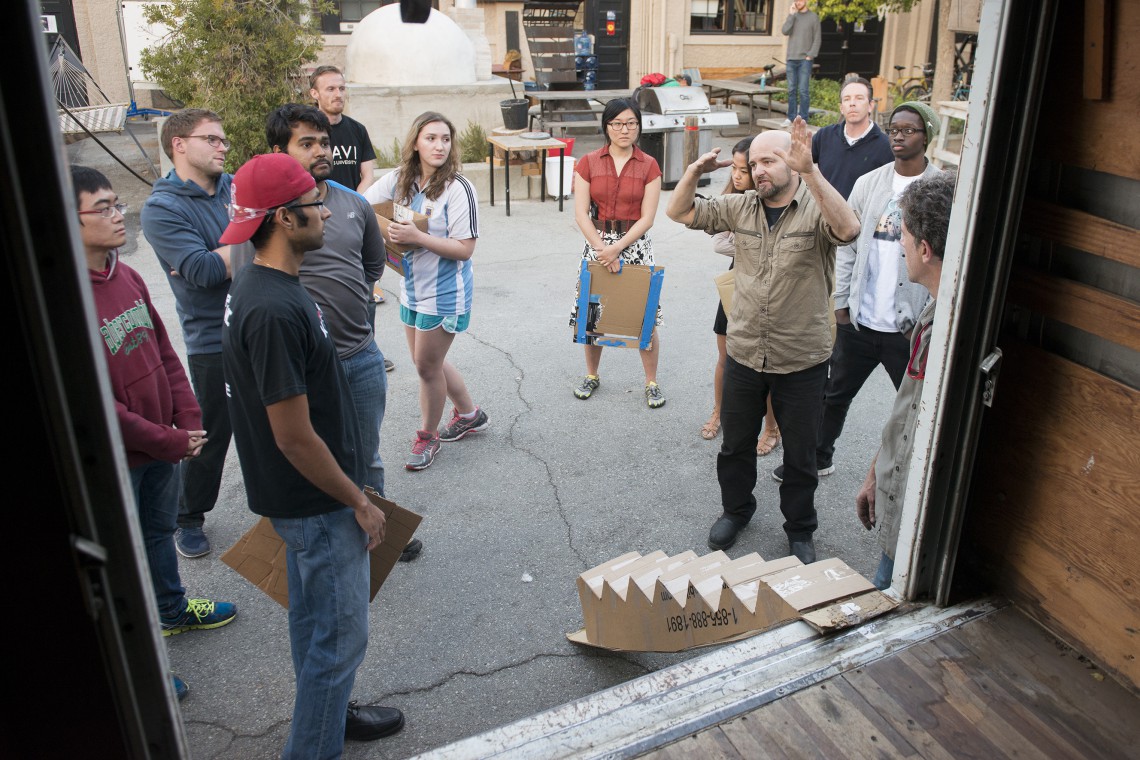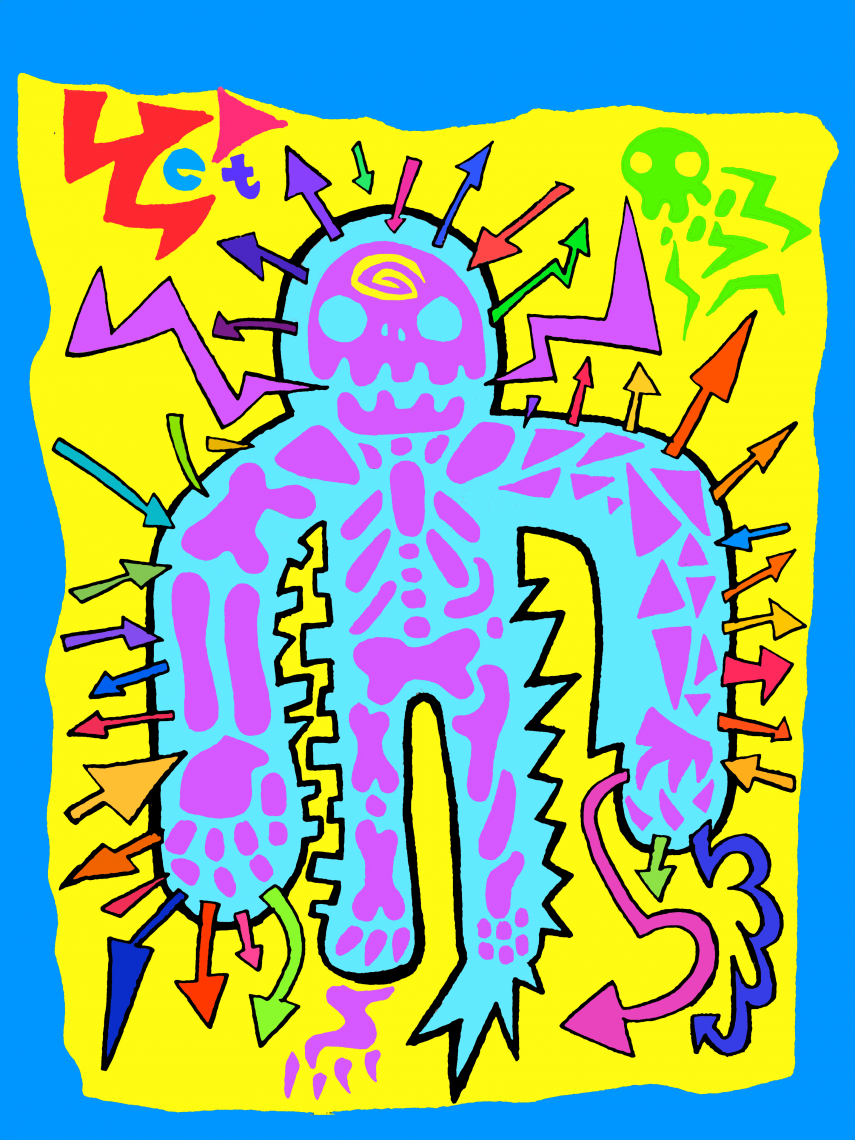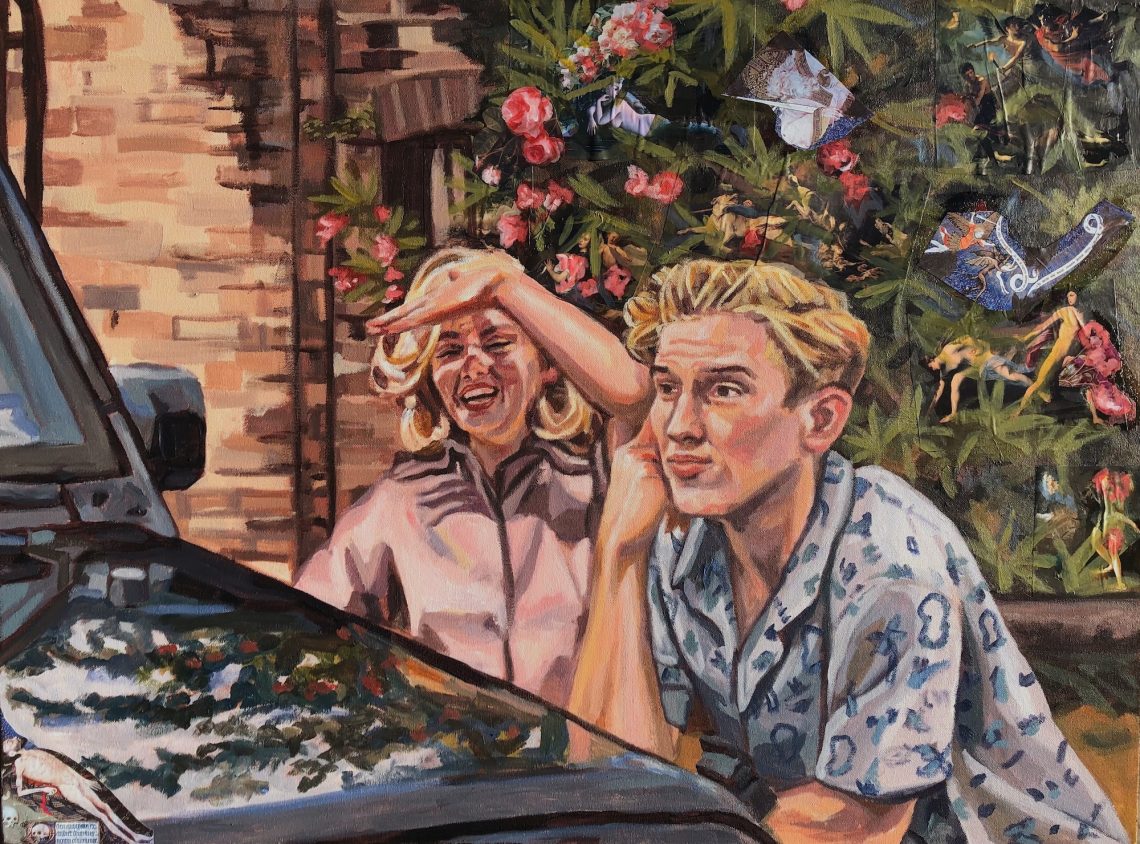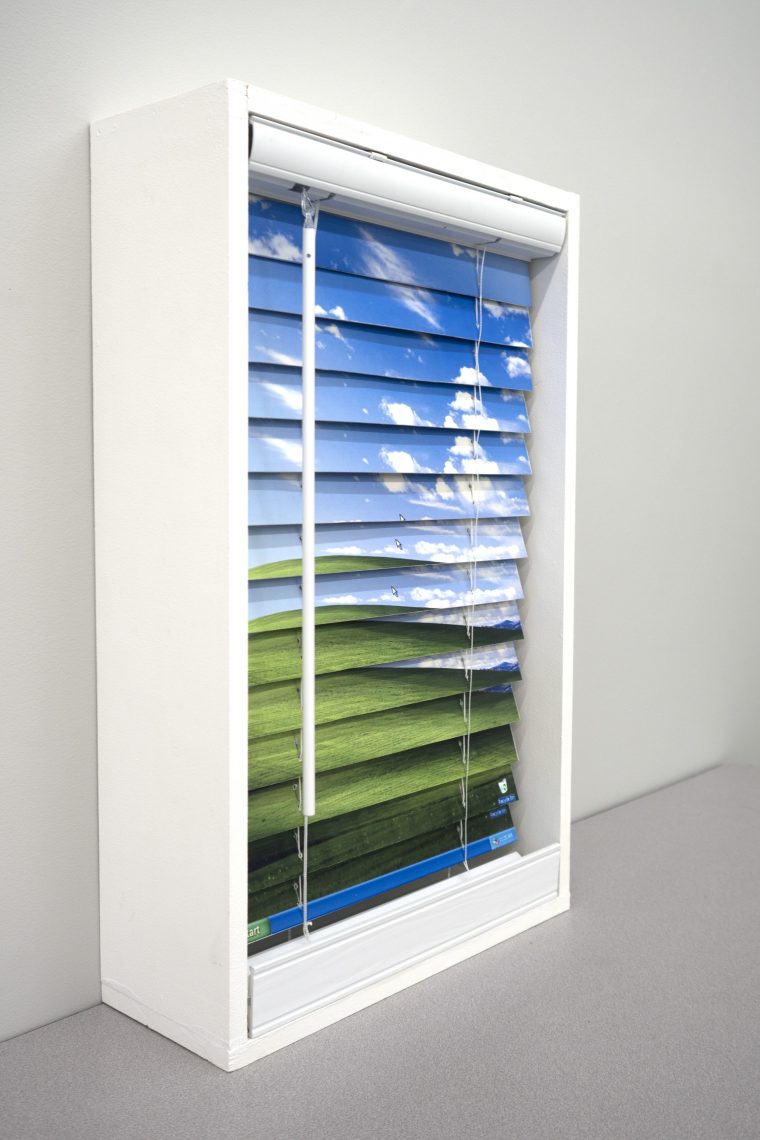
L.A. Cicero
Instructor Michael Sturtz comments on the students proposals for the modifications to the interior of the truck they will humanize for the Tech Museum of Innovation in San Jose.Stanford d.school students ‘humanize’ a truck for a good cause
Stanford students get their hands dirty designing and rebuilding a truck to serve the specific needs of San Jose's Tech Museum of Innovation.
The well-used delivery truck came with seats for two. Now it needed sturdy, safe seats for three people and a dog. And the passenger seat had to be removable so mechanics could maintain and repair the engine.
That’s just one of dozens of design challenges that must be solved by Stanford students in the Humanize My Ride course. The students are customizing the truck, purchased by the Revs Program, for donation to The Tech Museum of Innovation in San Jose, California, early next year.
Along the way, students learn to scope out the museum’s changing needs, then design, create prototypes, present, revise and build – all in 10 weeks. Lead instructors Michael Sturtz and Mike Serpe are modifying this innovative new course as they go, and including a few unconventional guests. Julie Shryne, who received her master’s degree from Stanford in product design this year, was also part of the teaching team, serving as design-thinking expert.
Teaching and building take place all around campus through the Hasso Plattner Institute of Design (also known as the d.school), the Product Realization Lab (PRL) and the Volkswagen Automotive Innovation Lab (VAIL). Some days, students and instructors can be found working at all three locations.
The students are getting hands-on experience building something that the museum can drive for years to come for outreach, educational programs and maker fairs.
Sturtz, a lecturer in mechanical engineering, and Serpe, a lecturer at the d.school, wanted to create a course using their deep experience in design, fabrication and hands-on teaching. And they wanted the students to develop creative confidence.
“I would rather see somebody push the envelope and fail and have our whole class learn from it,” Serpe said. “I would hold them up on a pedestal for that.” He said the lessons learned from false starts and early failures are a key part of the class.
Flexibility is important, too.
Real-time changes
Sturtz and Serpe knew they would need to change the new course on the fly. Sometimes that was easier said than done.
“My mantra is to always stay at least an hour ahead of the students,” Sturtz said. “There have been times when I’ve only been a couple of minutes ahead.”
“We definitely have our share of people that are interested in vehicles,” Serpe said. “We also have our share of people who are very excited to get their hands dirty.”
Their guest lecturers were a bit of both.
Rounding up unusual lecturers
Sturtz and Serpe drew on diverse and distinctive sources for guest instructors, not just the usual suspects from the large auto manufacturers.
Ralph Lux works for the FBI, tearing apart cars seized during drug busts and modifying vehicles used for undercover work. “Here’s a picture of a 1998 light-blue minivan,” Sturtz said, describing one FBI challenge. “We want to replace it with our exact replica, but inside is $200,000 of surveillance equipment.”
Dennis Harvey of the Sacramento Sheriff’s Department advises Ford on designs for law enforcement cars and SUVs. Philipp Haban is a talented industrial and transport designer working for the Google X team. He told the class that successful automotive designers think 20 to 50 years out. They shoot for the stars and then roll it back to what is possible today.
Empathetic design
A critical part of the class is for students to learn “empathetic design” – addressing the stated and unstated needs of vehicle users. The class interviewed an air conditioning repairman driving a van with 200,000 miles on the odometer, and an entrepreneur acquiring a fleet of falafel trucks.
Then the class started designing a vehicle to meet the needs of two staff members from San Francisco’s Exploratorium. The project fell through because of widely differing needs and styles. “It was an amazing learning exercise,” Serpe said.
Designing for a crowd with a crowd
Each of the students took short classes on welding, plastic fabrication, metalworking and woodworking at the Product Realization Lab, which has roots going back to the early days of the university. But as eager as many students were to get their hands dirty, they needed a design first.
The students are learning to design to meet the needs of Tech museum staff and many other truck users: drivers, passengers, mechanics and crowds of guests. Students must gather design clues from all of these users, then modify and deliver a fully functional truck.
The class learned that the museum wants the truck to work for both adults and kids as hands-on participants. They also discovered that insurance agents didn’t like the idea of new windows in the truck.
As with most d.school projects, the process involves lots of sticky notes. At one point, one side of the truck hosted dozens of multicolored 3-inch paper squares. On each note was written one truck-changing idea.
The students clustered the ideas into five working areas: interior; displays and windows; cargo and access; systems (mostly electrical and lighting); and icon (creating an iconic look using paint, decals and vinyl wrap).
An essential part of the d.school process is a lot of communication and negotiation between the groups.
“Every time someone changes something, you have go to through all these teams that it affects,” said mechanical engineering graduate student Peter Gammelby. “If we want lights on the outside, we need to ask (systems) nicely, give them some cookies or something.”
Changing needs
Midway through the course, the students and instructors were fairly confident that their design would meet the needs of the museum staff and other users. But then the museum threw them a curveball.
“They are rebranding the whole museum,” Sturtz lamented. “They want a whole new look and feel.” So the students took a big step back and rethought their approach “We’re going to make it adaptable,” he said, “so you can change its look and feel as you like.”
The new design includes easy-to-use mounts for attaching signs and whiteboards to the outside of the truck, frames for replaceable overhead banners and a vinyl wrap instead of a full custom paint job.
Sparks fly
Sparks were flying at VAIL one recent day as students cut and welded on the old truck. A crowd of students jammed into the front of the vehicle, trying to figure out how to mount a crash-worthy seat that would still leave the nearby engine accessible to mechanics. The outside of the truck is marked for placement of speakers, lights and electrical outlets.
Just don’t forget a seat for the dog.













